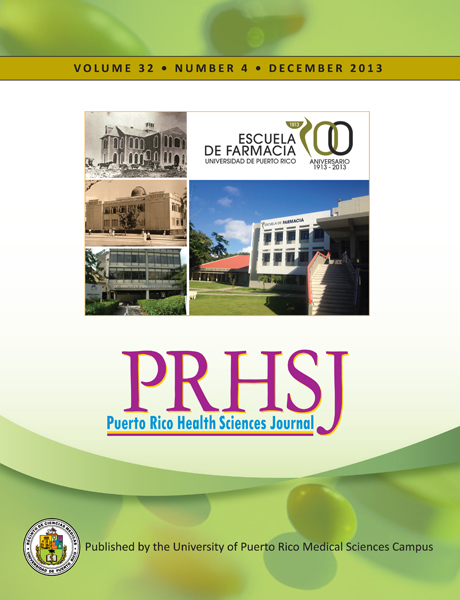Resumen
Objective: Estimate the DGC dimensions and determine whether the DGC dimension varies by gingival biotype. Methods: A cross sectional study was performed in the Undergraduate and Prosthodontic Graduate Program clinics of the School of Dental Medicine, University of Puerto Rico from August 2011 to April 2012. A total of 53 participants who needed restorative crowns in their teeth were recruited. Prior to crown preparation, the gingiva was classified as having a thin, mixed or thick biotype, according to transparency, using a standardized 15 UNC Hu-Friedy® periodontal probe. The DGC dimension was measured by transulcus probing. Descriptive statistics were calculated in mesial, medial, and distal sites by phenotypes. Differences between and within the sites’ DGC dimension mean were determined using a Friedman test. The level of significance was 0.05. Results: Mean DGC dimensions, in millimeters, for all sites measured were: 3.09 (95% CI: 2.91-3.27), 3.40 (95% CI: 3.18-3.62), 2.70 (95% CI: 2.51-2.89), and 3.17 (95% CI: 2.94-3.41) in mesial, medial, and distal sites, respectively. In thick, mixed, and thin biotypes the mesial sites showed greater DGC dimension means than the medial and distal (p<0.05) sites. Mean DGC dimension was greater for the thin compared to mixed and thick biotypes at mesial, medial and distal sites (p<0.001). Nevertheless, the thick biotype presented the smallest DGC mean dimensions compared to mixed and thin biotypes at the same sites. Conclusion: The DGC dimensions in all sites were similar to those reported in the literature. DGC dimensions are different for thin, mixed and thick gingival biotypes.
Authors who publish with this journal agree to the following terms:
a. Authors retain copyright and grant the journal right of first publication with the work simultaneously licensed under a Creative Commons Attribution License that allows others to share the work with an acknowledgement of the work's authorship and initial publication in this journal.
b. Authors are able to enter into separate, additional contractual arrangements for the non-exclusive distribution of the journal's published version of the work (e.g., post it to an institutional repository or publish it in a book), with an acknowledgement of its initial publication in this journal.
c. Authors are permitted and encouraged to post their work online (e.g., in institutional repositories or on their website) prior to and during the submission process, as it can lead to productive exchanges, as well as earlier and greater citation of published work (See The Effect of Open Access).
